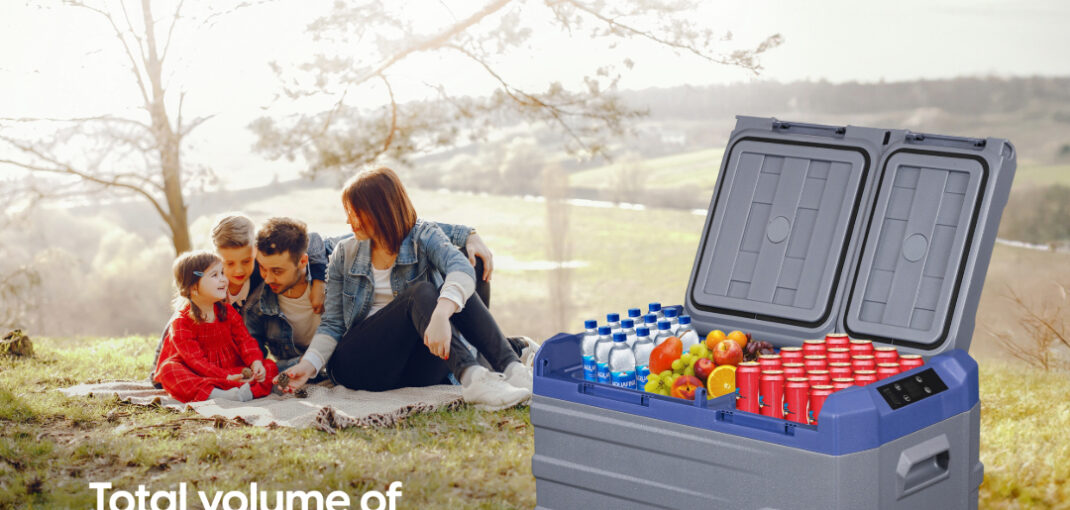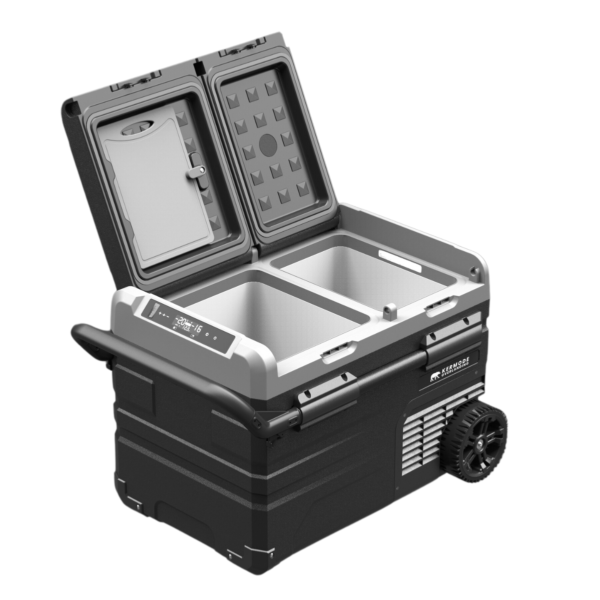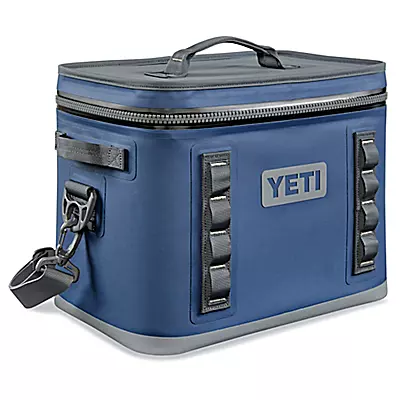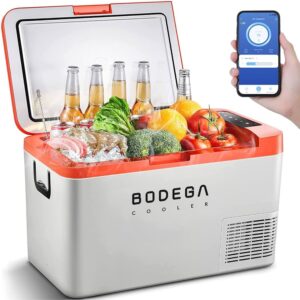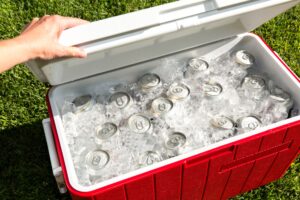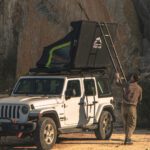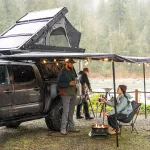“I’m trying to decide whether to bring a traditional cooler or a 12V portable fridge on my next camping trip. Which one is better?” We had the same question, so we dug into the details and figured out why we NEEDED a portable fridge, and also why it might be a waste of money if we were in someone else’s shoes.
In this guide, you’ll learn the key differences between these two options and discover what makes a 12V-24V portable fridge so special. We’ll break down all the technical details into easy-to-understand terms, so you can make an informed decision even if you have no idea what “12V” means. Get ready to find out which option is best for keeping your food and drinks fresh on your adventures!
Understanding Coolers and Portable Fridges: Features, Advantages, and Benefits
When deciding between a traditional cooler and a 12V portable fridge for your camping trip, it’s crucial to understand the unique features and benefits of each option. Let’s dive into what sets them apart and help you choose the best fit for your adventure.
Portable Fridges
Portable fridges are a step up from your standard cooler, designed to offer more precise temperature control and greater convenience. Here’s what makes them stand out:
Dual-Zone Capacity: Portable fridges often feature a dual-zone design, allowing you to keep items at different temperatures simultaneously. For instance, you can chill beverages in one compartment while freezing food in another. This flexibility is ideal for managing a variety of items on the go.
Energy-Efficient Cooling: These fridges use advanced compressors to provide efficient cooling, reaching temperatures as low as -20°C (-4°F). They can be powered by your vehicle’s 12V outlet, a standard wall plug, or even solar power, offering flexibility for different settings.
Smart Features: Many portable fridges come with smart WiFi controls, enabling you to monitor and adjust settings via a mobile app. This feature lets you check the temperature and power status from anywhere, adding an extra layer of convenience.
No Ice Needed: Unlike traditional coolers, portable fridges don’t require ice, which means you save space and avoid the mess of melted ice. This also means your food stays fresh longer and you have more room for storage.
Durability and Design: Built to handle rugged conditions, portable fridges are designed for outdoor use. They typically come with robust wheels, an extendable handle, and other features that make transportation and handling easier.
Price Range: Portable fridges typically range from $500 to $1,000 or more, depending on size and features. They represent a higher upfront cost but offer advanced features and long-term benefits.

Coolers, on the other hand, offer a simpler and often more affordable solution for keeping your food and drinks cold. Here’s a look at their characteristics:
Classic Cooling: Traditional coolers use ice to keep items cold. While they don’t offer precise temperature control, they are effective for short trips and situations where constant cooling isn’t critical.
Energy-Free: Coolers don’t require any power source, making them a straightforward choice for camping or trips where electricity isn’t available. They rely on ice or ice packs to maintain a low temperature.
Versatility and Simplicity: Coolers are easy to use and maintain. There’s no need to worry about power connections or complex features—just pack them with ice and your items stay cold. They’re also generally more affordable than portable fridges.
Rugged and Durable: High-quality coolers are built to withstand tough conditions, with durable materials and construction designed to handle rough handling and outdoor environments.
Space Efficiency: Coolers are often designed with efficient insulation to keep ice frozen for extended periods. This makes them a practical choice for shorter trips or when you need to keep things cold without access to electricity.
Price Range: Coolers are generally more affordable, ranging from $50 to $400, depending on size and brand. They offer a budget-friendly option without the advanced features of a portable fridge.

Simplified Specifications: Portable Fridges
Let’s break down the specifications of a portable fridge using practical examples to show you what they really mean:
Compressor Type: LG
- Example: Think of the LG compressor like the engine in a high-performance car. It’s reliable and efficient, ensuring your fridge cools effectively. It works like the compressor in your home fridge but is built to handle rough outdoor conditions.
Power Supply: DC 12/24V, AC 100-240V, Optional Solar
- Example:
- DC 12/24V: Use this to plug the fridge into your car’s outlet, keeping drinks cold during a road trip.
- AC 100-240V: Plug it into a regular wall outlet at home to keep your fridge running while you’re not on the road.
- Optional Solar: If you’re camping off the grid, solar power lets you keep the fridge running without needing a traditional power source.
- Example:
Built-in Battery Compartment: 15600mAh, 11.1V, 173Wh
- Example: This is like having a backup power bank for your phone, but much larger. It lets the fridge run for hours even if you don’t have access to a power outlet.
Display Screen Initialization
- Example: When you turn on the fridge, it beeps and briefly shows settings on the screen, like a quick start-up check. This means it’s ready to start cooling.
Temperature Setting Range: -20°C to 20°C (-4°F to 68°F)
- Example:
- -20°C (-4°F): Perfect for freezing meat like steaks or chicken. At this temperature, meat can stay frozen for several months without freezer burn.
- 20°C (68°F): Ideal for keeping drinks cool. It’s not too cold, so your beverages stay refreshingly chilled but not icy.
- Example:
Cooling Modes: MAX and ECO
- Example:
- MAX Mode: If you put warm food in the fridge, MAX Mode quickly brings it down to a safe temperature.
- ECO Mode: Use this when you want to save battery power. It cools more slowly, which is handy for overnight camping trips when you don’t need super-fast cooling.
- Example:
Battery Protection Mode: High, Medium, Low
- Example:
- High: If your car battery is strong, use this setting for maximum cooling.
- Medium: If you’re worried about draining your car battery, set it to Medium to balance cooling and power use.
- Low: Use this when you want to conserve as much power as possible, useful for long trips.
- Example:
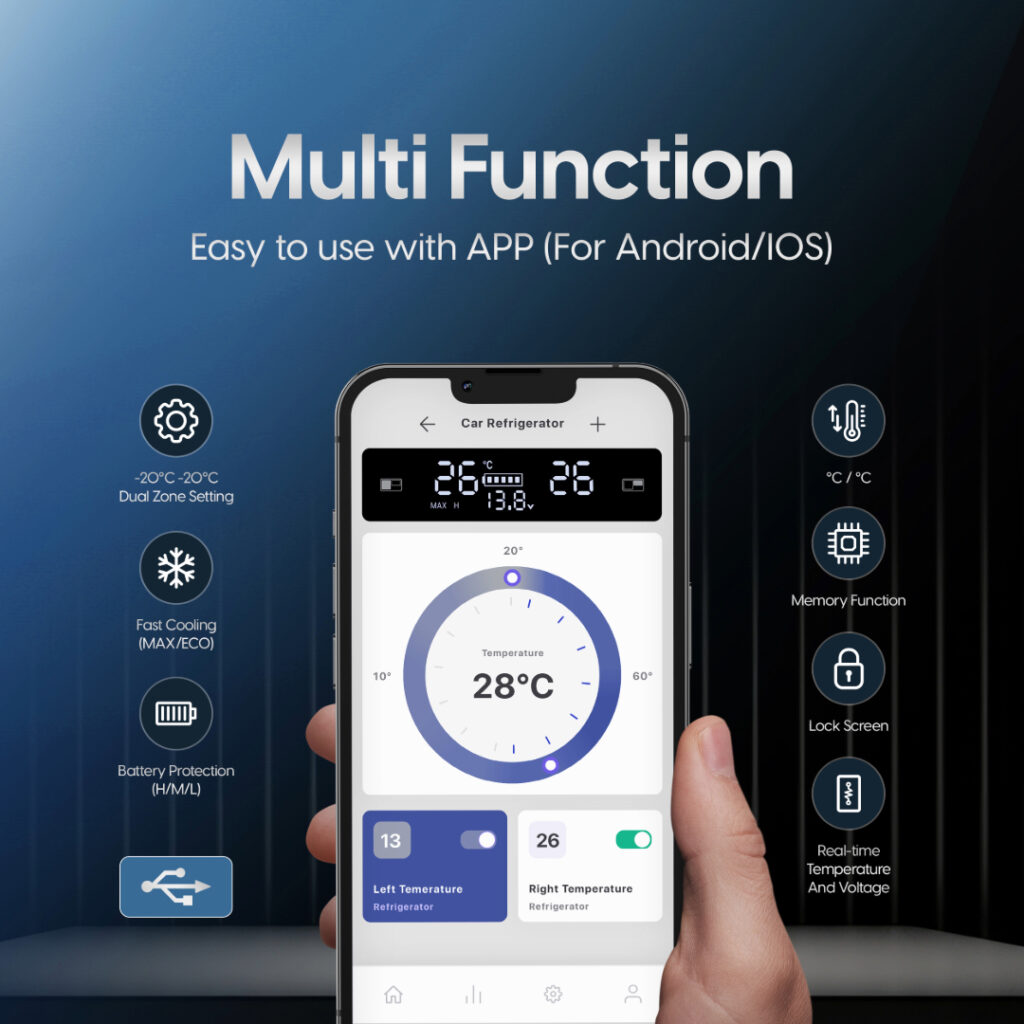
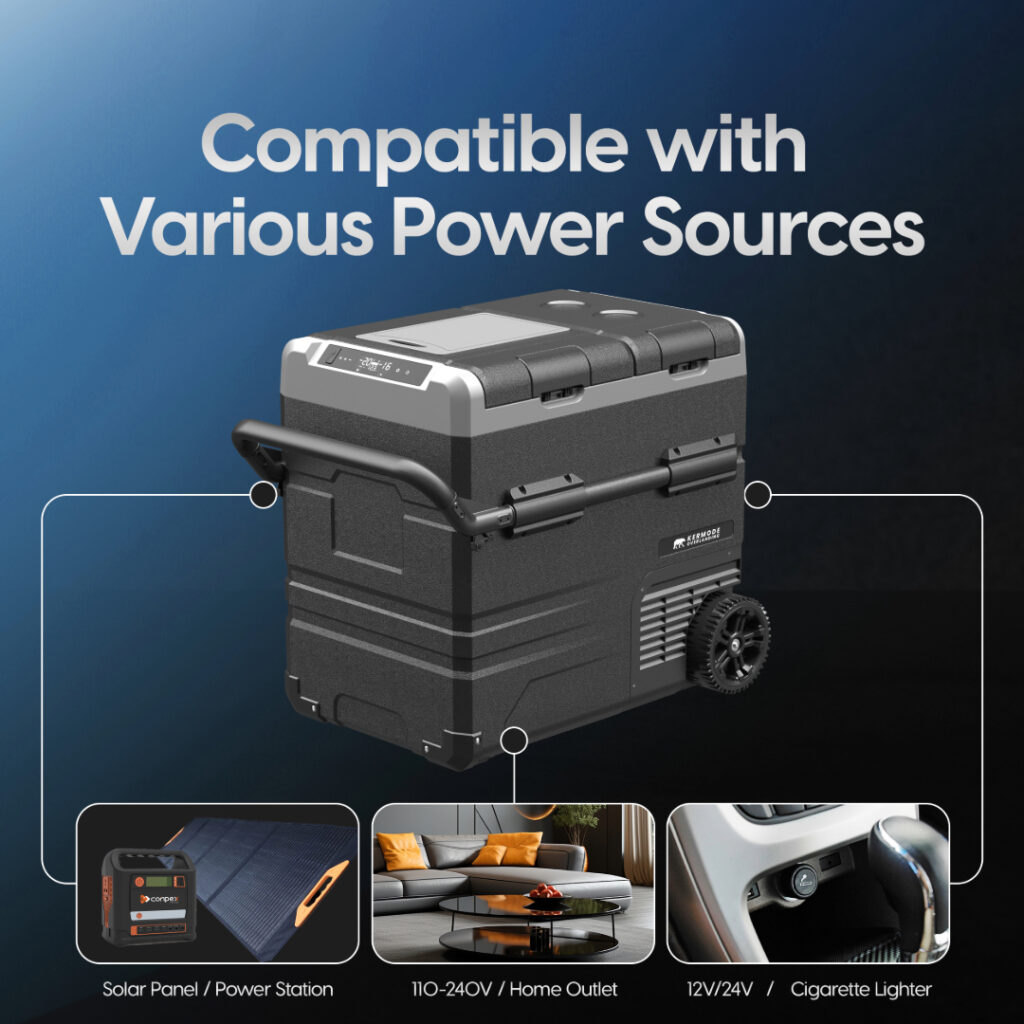
For us overlanders, who embark on extended journeys through remote and rugged terrain, a portable fridge is a game-changer. We need to keep food fresh and safe over long stretches without easy access to grocery stores. A portable fridge offers reliable cooling and freezing capabilities, crucial for preserving food on the go. Features like dual-zone temperature control and versatile power options ensure we can enjoy cold drinks and frozen meals, all without the hassle of ice that melts and creates messes.
Coolers, while handy for day trips or short outings, don’t meet our needs as effectively. They rely on ice, which melts over time, leading to soggy food and frequent restocking—an inconvenience on long trips where finding ice can be difficult. Without precise temperature control, maintaining food safety and freshness over extended periods is challenging. Coolers also take up space with ice, reducing room for food and drinks, and they create messes as the ice melts. They can’t freeze items, which limits meal options. In contrast, a portable fridge is built to handle the rough conditions of off-road travel, offering a more reliable and hassle-free solution for our adventures. For those who only go on short trips or have easy access to fresh food, a traditional cooler or ice chest might suffice without the extra cost and complexity of a portable fridge.

